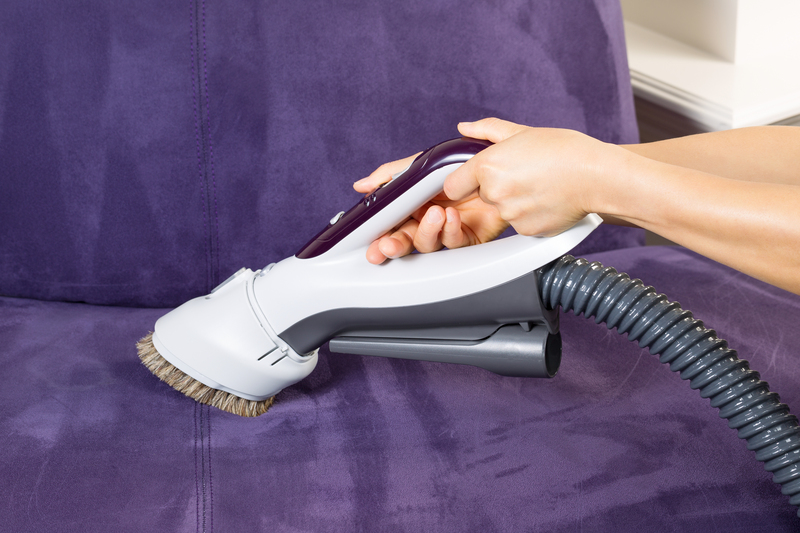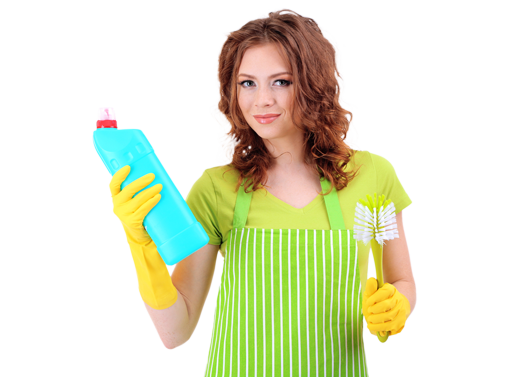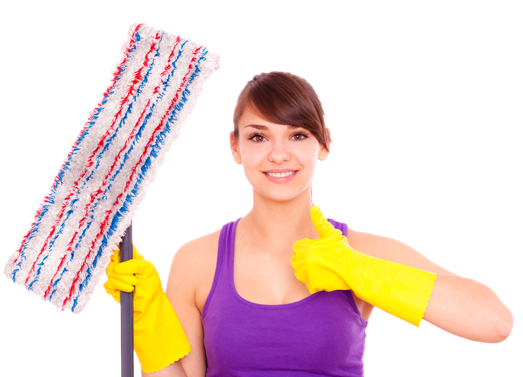A New Perspective on Carpet and Hard Floor Hygiene
Posted on 28/09/2025
A New Perspective on Carpet and Hard Floor Hygiene
Keeping your living and workspaces clean is essential, but have you ever thought beyond the obvious about the cleanliness of your carpets and hard floors? With new advancements in cleaning technology and an increased understanding of indoor pollutants, it's time to gain a fresh outlook on carpet and hard floor hygiene. This comprehensive article explores modern cleaning practices, the importance of floor hygiene, and innovative strategies to maintain healthier interiors. If you're seeking insights on extending the life of your flooring, enhancing home air quality, and creating a safe environment for your family, read on!

Why Carpet and Hard Floor Cleanliness Matters
Our floors are often the most used surfaces in our homes and offices, yet they tend to receive less attention than other areas. Carpet and hard surface hygiene is vital for several reasons:
- Health and Allergy Reduction: Carpets trap dust, pollen, dander, and microbes, while dirty hard floors accumulate bacteria and potentially harmful debris.
- Air Quality Improvement: Clean floors mean cleaner air--especially important indoors, where people spend up to 90% of their time.
- Floor Longevity: Routine cleaning and correct hygiene extend the life and appearance of your floors, protecting your investment.
- Aesthetic Value: Floors that sparkle enhance the look and feel of any space, making it more inviting and comfortable.
Understanding the deeper significance of carpet and hard floor cleanliness helps us go beyond routine vacuuming or mopping and consider more thorough and effective measures.
Modern Insights into Carpet Hygiene
Carpets: A Hidden Harbor for Pollutants and Pathogens
Carpets offer warmth and comfort, but they're also magnets for pollutants. With a dense network of fibers, carpets easily trap:
- Dirt and dust mites
- Pet dander and hair
- Mold spores
- Food particles
- Bacteria and viruses
Did you know? A typical carpet can hold up to four times its weight in dirt. Frequently, contaminants accumulate deep in the pile, beyond what vacuuming can remove. When walked upon, these particles are released back into the air, negatively impacting IAQ (Indoor Air Quality).
State-of-the-Art Carpet Cleaning Innovations
A new perspective on carpet hygiene incorporates both deep cleaning and preventive measures:
- Hot Water Extraction (Steam Cleaning): This process penetrates deep into carpet fibers to loosen and lift stubborn grime, allergens, and microbes. It's more effective than surface-level vacuuming.
- Low-Moisture Encapsulation: This method uses special compounds that capture dirt particles, allowing them to be easily vacuumed up. It dries faster and uses less water, reducing mold risks.
- HEPA-Filtered Vacuums: High-Efficiency Particulate Air filters trap fine particles and allergens, preventing them from re-entering the environment.
- Eco-Friendly and Hypoallergenic Products: Plant-based formulas minimize chemical exposure, making cleaning safer for families and pets.
Routine Carpet Maintenance Tips
- Vacuum at Least Twice a Week: More often if you have pets or a high-traffic home.
- Spot-Clean Immediately: Address spills and stains as soon as they occur to prevent permanent marks.
- Schedule Professional Cleanings: Every 6-12 months, get a deep professional carpet cleaning for the best results.
- Use Area Rugs and Mats: Place these at entrances to reduce the amount of dirt brought onto carpets.
- Practice Shoe-Free Living: Adopt a no-shoes rule indoors to further limit contamination.
Maintaining proper carpet hygiene doesn't just keep your floors looking new--it also creates a safer, healthier space for everyone.
Hard Floor Hygiene: The Overlooked Essential
Common Hard Floor Materials and Unique Hygiene Challenges
Hard floors, such as tile, hardwood, laminate, and vinyl, have special requirements and vulnerabilities. They may not hold onto dirt like carpets, but their surfaces are regularly exposed to:
- Foot Traffic: Shoes track in outdoor debris and microbes.
- Spills and Residue: Food, drink, and cleaning products can leave stubborn marks or sticky residue.
- Pet Accidents: Can lead to hidden bacteria if not cleaned promptly.
- Microbial Growth: Especially in moist areas like kitchens and bathrooms.
Effective Hard Floor Cleaning Techniques
Keeping your hard surface floors hygienic involves more than just sweeping or quickly mopping. Here's how to achieve optimal cleanliness:
- Dry Cleaning: Use microfiber mops or dusters to capture fine dust particles, rather than simply pushing them around.
- Damp Mopping: Mop hard floors with a pH-neutral cleaner specifically intended for your floor type. Avoid soaking the floor, as excess water can cause damage--especially on wood.
- Disinfect Regularly: High-touch and high-traffic areas need periodic disinfecting, particularly during flu season or after illness in the household.
- Deep Clean and Seal: Periodically deep clean grout lines and seal porous stones or tiles to prevent microbial intrusion.
- Use Floor Mats and Runners: As with carpets, mats at entrances can catch grit and moisture, reducing wear and simplifying cleaning.
Advanced Approaches to Hard Floor Hygiene
- UV-C Sanitizing Devices: These gadgets use ultraviolet light to destroy bacteria and viruses on hard floors.
- Steam Mops: Steam loosens and removes grime without the need for harsh chemicals, and the heat kills most pathogens.
- Robotic Cleaners: The latest robots can sweep, mop, and even disinfect floors, taking the effort out of daily floor hygiene.
Remember: Not all hard flooring is created equal! Always follow manufacturer guidelines for cleaning to avoid damage and maintain warranty protection.
The Connection Between Floor Hygiene and Indoor Air Quality
Clean carpets and hard floors play a significant role in indoor air quality (IAQ). Homes with poor floor hygiene experience higher particulate levels, more allergens, and an increased risk of illness. Here's how maintaining superior floor hygiene practices benefits your air quality:
- Traps Harmful Particles: Carpets act as passive filters, trapping dust and pollen--if properly maintained.
- Removes Airborne Germs: Regular cleaning prevents re-suspension of bacteria and viruses into the air during daily activities.
- Prevents Mold Growth: Reduces moisture and organic material accumulation, cutting off fuel for mold.
In workplaces, studies show that employees are more productive and take fewer sick days in offices with better IAQ and cleaner flooring. Floor hygiene is, therefore, a key factor not just in domestic wellness, but also in business success and public health.
The Role of Green Cleaning in Floor Hygiene
In the quest for healthier environments, many households and businesses are switching to environmentally friendly floor cleaning practices. These sustainable approaches include:
- Natural Cleaning Agents: Vinegar, baking soda, and essential oils offer effective cleaning without harmful fumes or residues.
- Biodegradable Products: These break down safely in the environment, reducing your ecological footprint.
- Reducing Water Use: Techniques like encapsulation and microfiber mopping use less water while remaining effective.
- HEPA Vacuums and Steam Cleaners: Deliver clean results while minimizing environmental impact.
Green cleaning not only protects the planet but can also minimize allergy and asthma triggers within your home or workplace.
Floor Maintenance Myths Debunked
Despite our growing knowledge, certain misconceptions about carpet and hard floor hygiene persist. Let's clear up some common myths:
- Myth: Vacuuming once a week is enough for carpets.
- Fact: High-traffic areas and pet owners should vacuum more often to maintain true cleanliness.
- Myth: All hard floors are low-maintenance and self-cleaning.
- Fact: Hard floors require regular care to prevent scratches, stains, and microbial growth.
- Myth: Bleach is the best cleaner for every hard floor.
- Fact: Bleach can damage surfaces and should only be used sparingly, according to manufacturer recommendations.
- Myth: New finishes and materials don't need maintenance.
- Fact: Every floor material benefits from regular, appropriate care to retain its beauty and hygiene.
Emerging Trends in Floor Hygiene Technology
The world of floor and carpet cleanliness evolves each year with smarter tools and more effective solutions. Outlined below are notable innovations:
- Smart Cleaning Devices: Wi-Fi connected robotic mops and vacuums that can be scheduled and monitored from your smartphone.
- Self-Cleaning Floor Coatings: New finishes break down organic material on contact or repel spills and stains, simplifying maintenance.
- Multi-Stage Filtration: Next-generation vacuums use ultraviolet light, HEPA filters, and antibacterial coatings to trap and neutralize millions of invisible contaminants.
- Data-Driven Cleaning: Commercial solutions now use floor sensors and data analytics to track cleaning needs and optimize schedules.
Staying updated on these technologies helps consumers and businesses maintain the highest standards of floor hygiene while saving time and money.

Practical Tips for a Hygienic, Healthy Home
Daily, Weekly, and Monthly Checklist
- Daily:
- Wipe up spills promptly.
- Quick sweep or vacuum high-traffic areas.
- Weekly:
- Vacuum or mop all flooring thoroughly.
- Clean entrance mats and area rugs.
- Check for spots or stains that need attention.
- Monthly:
- Deep clean carpets and hard floors.
- Disinfect bathroom and kitchen floors.
- Inspect for and treat any signs of mold or damage.
In multi-pet or family homes, increase the frequency of tasks as needed. Always use products suited to your specific floor type!
Conclusion: Embracing a New Standard of Floor Hygiene
It's clear that adopting a new perspective on carpet and hard floor hygiene is essential for healthier, longer-lasting, and more beautiful living spaces. By understanding risks, utilizing innovative tools, debunking myths, and following rigorous routines, you can significantly improve both the cleanliness and wellness of your environment.
Remember, floor hygiene isn't simply about appearance--it's about protecting the health of everyone in your home or business. With thoughtful care, eco-friendly choices, and the latest cleaning technologies, you can enjoy fresher air and safer, cleaner floors every day.
Are you ready to transform your approach to carpet and hard floor hygiene? Take these strategies and tips to heart, and discover the difference that expert floor cleaning can make in your life!




